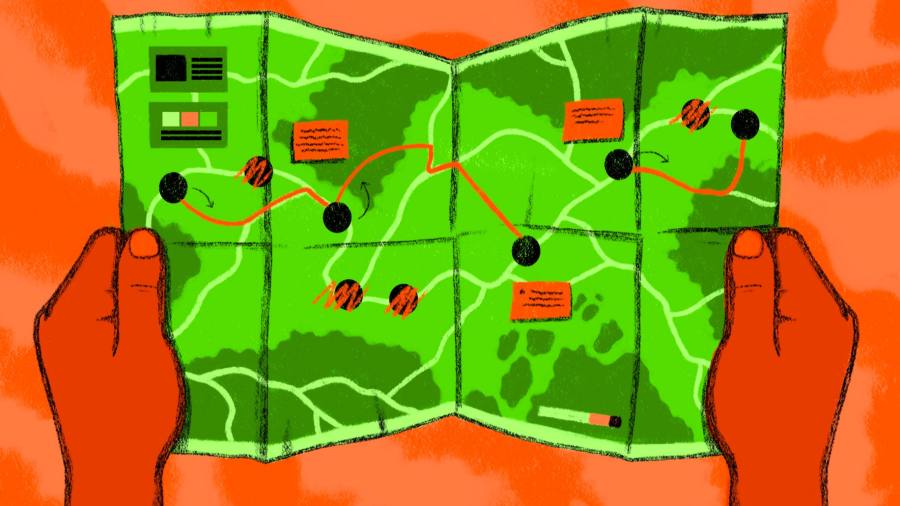[ad_1]
Is there a more reliable source of disappointment anywhere in the world than my own daily to-do list? Each night I write down everything I plan to do in the morning, and I transfer all the uncompleted tasks from the previous day. I’ve done this for more than a quarter of a century. In 10,000 days, have I ever looked at yesterday’s list and nodded with satisfaction that every item had been ticked off? Not once.
I can take consolation in knowing that I am not alone. Whether the task is as trivial as processing the past hour’s emails or as colossal as building a high-speed rail link or staging the Olympic games, we underestimate the time and effort involved on almost every occasion.
One might think that we are in the middle of a wonderful exception: the record-shattering development of vaccines in months rather than years. Yes — and no. Vaccines have been created with astonishing speed. I looked at prediction markets from July, “superforecasts†from August and modelling from early October, and all suggested that a vaccine was unlikely before the end of 2020.
On the other hand, while vaccines have been developed quickly, the production process is, like most large projects, running well behind expectations. Rasmus Bech Hansen, founder of Airfinity, a life science analytics company, told me that vaccine manufacturers projected they would produce 800 million doses by the end of 2020. The reality was something between 20 million and 30 million doses.
The pharmaceutical companies, then, achieved about 3 per cent of what they had announced — much the same proportion that I tick off my to-do list. At least they have an excuse: a vaccine is one of the world’s most complicated products to produce. With a new vaccine, snags and delays are inevitable.
The realist might add that most megaprojects have an inbuilt bias towards overpromising. The vaccine manufacturers who projected 800 million doses might well have been fooling themselves, but they were also promising the moon as a way to win advanced orders. More successful vaccine programmes, such as the UK’s and the US’s, did not take those optimistic projections too seriously: they paid closer attention to the supply chains themselves and invested money in manufacturing capacity.
In 1977, psychologists Daniel Kahneman and Amos Tversky put a label on the fact that everything takes longer than we hope: they called it the planning fallacy. At the heart of the problem is that we intuitively make such forecasts by focusing on the project itself and imagining in our heads (or on a project management chart) how it will unfold. We never quite manage to imagine all of the different ways in which things might go wrong.
In a large, complex project, delays are likely, and it is difficult to prevent them from propagating throughout the schedule. Even in a small project, there are distractions or setbacks that we did not plan for.
A classic study of this phenomenon at a small scale was conducted by psychologist Roger Buehler and colleagues in the early 1990s. They asked a group of undergraduates to predict how long it would take to submit their honours thesis and to consider upside and downside scenarios — “if everything went as well as it possibly could†and “if everything went as poorly as it possibly couldâ€.
The students’ optimistic estimate was 28 days and their baseline guess not much longer: 34 days. The worst-case scenario estimate was 49 days. The reality? Fifty-six days.
Nor is this just the naivety of students. Huge infrastructure projects routinely overrun, according to research conducted by Bent Flyvbjerg, professor at Oxford university’s Saïd Business School. In 2014, he wrote: “Performance data for megaprojects speak their own language. Nine out of ten such projects have cost overruns.†Flyvbjerg adds that this has been true for decades in public and private sector projects alike.
But what of my daily to-do list? I cannot claim the projects are especially complex, and there is nobody to whom I am overpromising except myself. IÂ have no excuse.
Nor did the students that Buehler studied. One might argue that their thesis seemed to them as unknown and complex as any megaproject. But when Buehler followed up by asking them to predict completion time for smaller academic and non-academic projects such as writing an essay or cleaning their apartment, the typical project took twice as long as forecast. We make the same mistake over and over again.
When trying to come up with a realistic prediction, Kahneman and Tversky advocate looking at the experience of similar projects instead. For an essay or bout of spring cleaning, that should be easy. It is not always possible. For each large, groundbreaking project, there is only so much that can be learnt from history — though we can certainly learn something.
But do we? Kahneman is fond of telling a story where he and a team of experts in decision-making, pondering an ambitious curriculum reform project, wisely looked at the record of similar efforts. That record suggested their own efforts would be fruitless and hugely time-consuming.
“Facing a choice,†he wrote, “we gave up rationality rather than give up the enterprise.†The project took eight years and ended in failure.
If Kahneman can’t follow his own advice, who am I to expect wisdom? I told myself I’d finish this column yesterday afternoon so that I could focus on my children. And yet here I am, still typing. The planning fallacy strikes again.
Tim Harford’s new book is ‘How to Make the World Add Up’
Follow @FTMag on Twitter to find out about our latest stories first. Listen to our podcast, Culture Call, where FT editors and special guests discuss life and art in the time of coronavirus. Subscribe on Apple, Spotify, or wherever you listen.
[ad_2]
Source link





